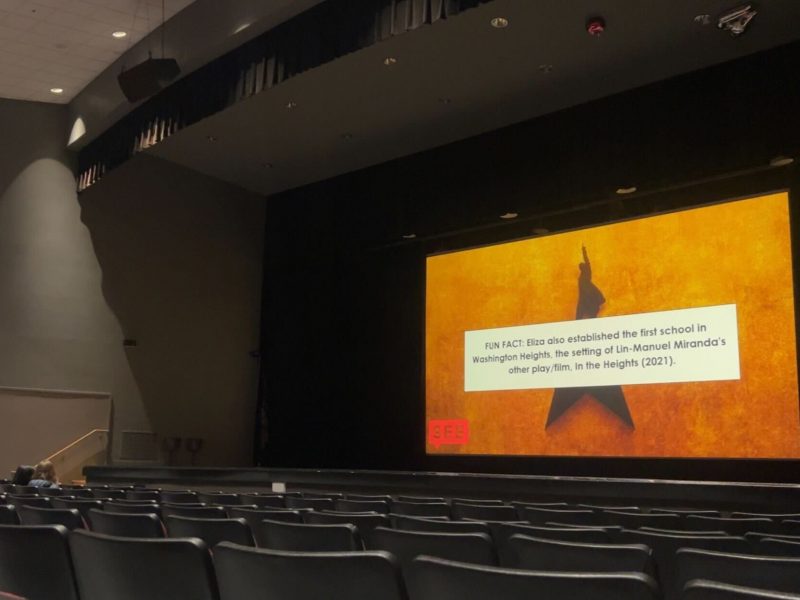By Tommy Tucker
For The Diamondback
A recital combining music, art, speech and poetry held by the University of Maryland’s Meaningful Connections chamber music class on Monday night sought to create a deeper understanding of music.
The class and recital focused on connecting the audience and musicians to the music by combining the performance with other mediums. The students chose the artwork and literature that best reflected the pieces they performed, displaying it on a screen during each performance.
“A lot of times, people give performances and you just walk on stage and you play, and that’s kind of it,” music performance graduate student and student performer Brianne Steif said. “When we have other things for people to look at, like putting artwork on the screen, having poems, people dancing, it makes the music more relatable.”
[Kaleidoscope of Bands showcases the variety of UMD community bands]
Having no prior knowledge of the piece they were assigned, Steif’s group needed to research their song to make a connection through the accompanying artwork and text.
“When we went to try and put art with it, it was really about what we were inspired from by learning the piece together, and learning the different movements, as opposed to what the composer told us,” Steif said.
Grouped together by the professors, each ensemble and duet consisted of an atypical pairing of instruments. Part of the goal of the class is to have students step out of their comfort zones and perform in ways they were not used to.
“Most of us are playing in ensembles that are not super traditional instrumentations,” music graduate student and student violinist Glen Kuenzi said. “We’re learning how to play with different people with different skill sets, so that’s really cool.”
The class’ professors, Rita Sloan and Irina Muresanu, encouraged their students to experience and collaborate with other departments within the university, having crossover classes with the dance department.
[UMD’s Kreativity brings a multicultural space for student creatives]
Students were also encouraged to learn genres of music not typically associated with their chosen instrument.
“Typically, a lot of string players and classical players don’t get to play blues and jazz,” said senior music education and violin performance major Rachel Choi, a student violinist.
In total there were five performances from 12 students grouped into three duos and two ensembles. The groups included combinations such as violin with marimba and piano with clarinet.
Muresanu thought this was the best the students played all semester, with the concert serving as the final for their class.
“There’s something about this exchange of energy between the audience and performers that makes it all more exciting,” Muresanu said.
The main thing Muresanu wants her students to take away from the class and their performance is that if they create something that is meaningful to them, it will translate to the audience.
“It really made us have to get creative and put our own personal spin on it,” Steif said.



